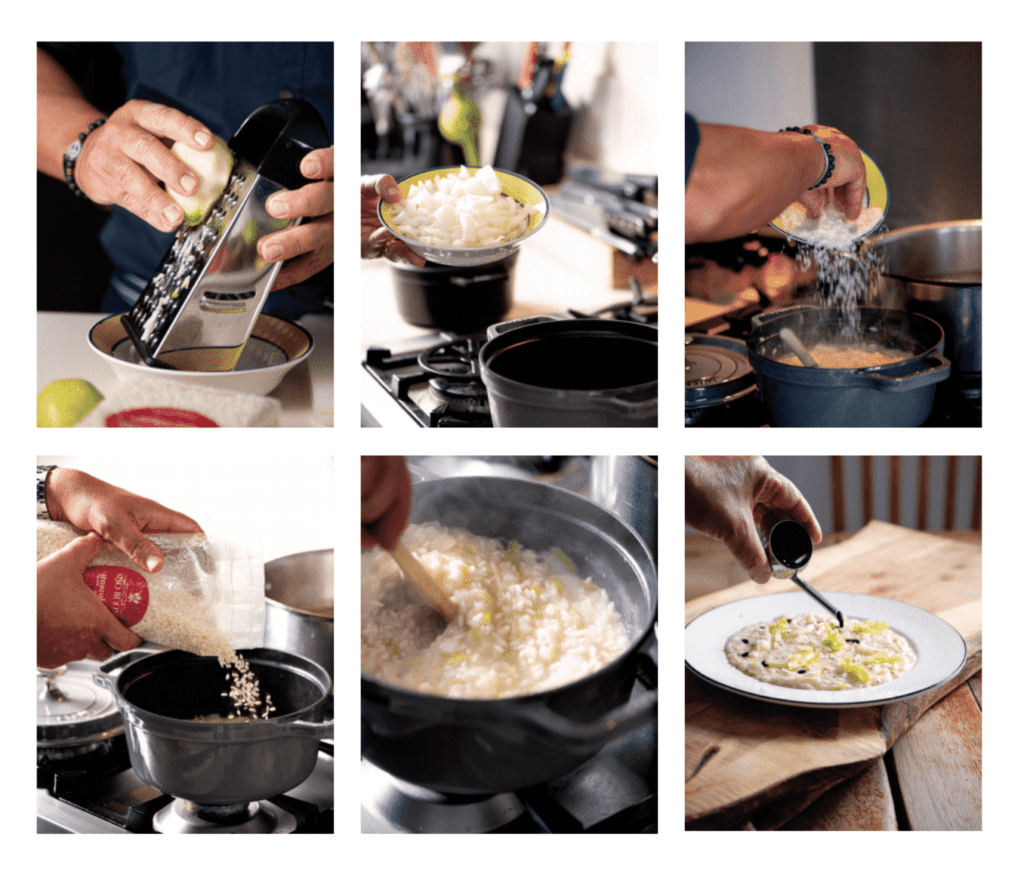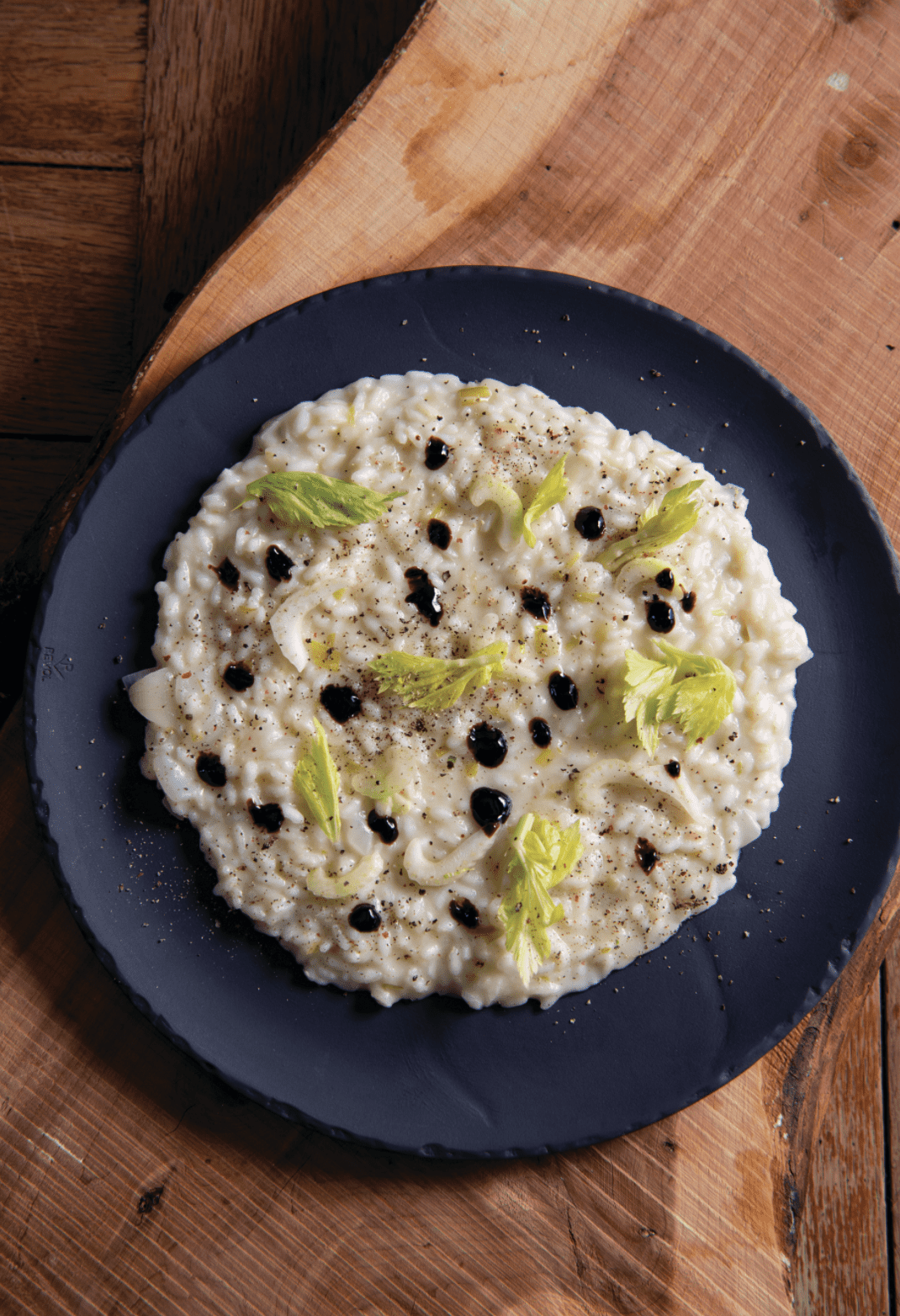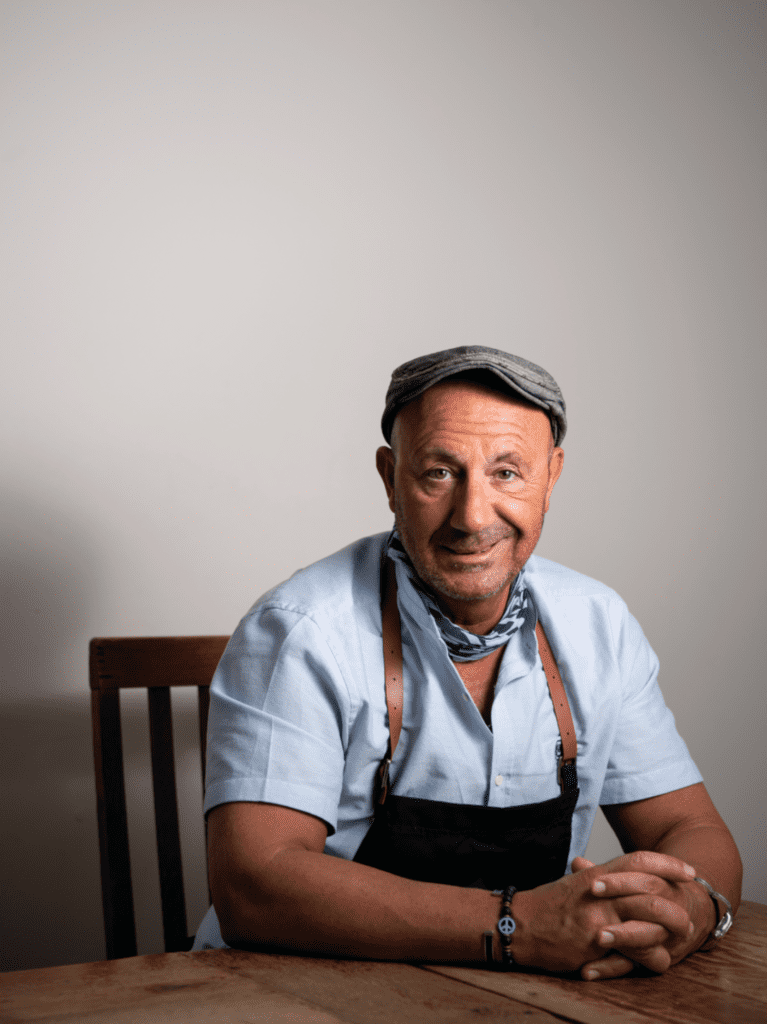Photographed by Michael Karas
Chef Fortunato Nicotra has cooked for two popes, earned two Michelin stars, and for 24 years, designed the menus and ran the kitchen at one of New York City’s most accoladed and beloved restaurants. But his name remains largely unknown, obscured by the high profile of the restaurant’s owner, Lidia Bastianich. The matriarch of an Italian food empire that includes four restaurants, six Eataly locations, a popular cooking show, cookbooks, and products, Bastianich opened her New York flagship, Felidia, in 1981. Following Nicotra’s arrival in 1996, the Upper East Side restaurant earned three stars from New York Times critic Ruth Reichl and again a decade later from Frank Bruni.
For Felidia first timers expecting heavy pasta dishes cloaked in garlicky red sauce, Nicotra’s menu would have been a surprise. Signature dishes included tutto crudo, a starter of shaved raw tuna, salmon, and branzino with sea beans and puffed rice; ravioli filled with pear and pecorino cheese; and spaghetti carbonara made with whipped uni (sea urchin) and olive oil instead of eggs. Food writers consistently praised Nicotra for his energy and creativity; despite its status as a bastion of New York City fine dining, Felidia never felt stale or stuffy. When the pandemic forced it to close in March, Nicotra saw the end of an era as a personal opportunity.“I decided to use the time to cook for my family, write recipes and even conduct some outdoor cooking classes and prepare small, private meals for friends and former guests of the restaurant.”

This latest chapter is an echo of the step Nicotra took in 1996, when after receiving one Michelin star each at sister restaurants in his native Sicily, he sought his next opportunity in America. An admirer of California’s food culture and the easy availability of local ingredients, he had hoped to end up there. A friend introduced him to Bastianich, and the first person he spoke to at Felidia was Shelly Burgess, who had joined the organization six months earlier and spoke fluent Italian. “I had just returned from living and studying in Florence, Italy and was asked to help coordinate Fortunato’s arrival to New York,” she says. “Although he was kind on the phone, we did not always get along once he arrived. We occasionally worked together at off-site events and typically ended up arguing about a table set-up, a decoration, or even a parking spot, every time. I concluded that he was difficult and even told Lidia once that I never wanted to work with him again at an off-premise event.” Now married for over 20 years, the Nicotras have three children: Alex, 19, Julia, 16, and Luca, 9. Shelly continues to work with Bastianich as the executive producer of Public Television’s Lidia’s Kitchen, and Fortunato is relishing the time with his family, cooking mostly simple, kid-friendly food in the kitchen of their home in the northern New Jersey suburbs. His social media feeds feature photos of fresh, wholesome dishes such as baked breaded veal topped with a colorful salad of corn, greens, and tomato, grilled whole fish and steaks, and linguini with clams and broccoli. (His daughter, Julia, is in charge of the photos and videos.)
Cheese often figures prominently in Nicotra’s cooking; melted buffalo mozzarella draped over pan-fried chicken breasts topped with tomato sauce for chicken pizzaiola, or Grana Padano tossed into a “meatless Monday” spaghetti with garlic and oil. He touts the ease of DIY ricotta and treats friends to fresh burrata using local mozzarella stuffed with rich heavy cream. “It never touches the refrigerator—you make it and you serve it,” he says. “I also use a lot of good cheddar—from Saxelby Cheese if I can get it; that’s my youngest child, Luca’s, favorite.”
FORTUNATO NICOTRA’S FAVORITE AMERICAN CHEESES
Rupert Reserve: Consider Bardwell Farm, West Pawlet, VT
Ashbrook: Spring Brook Farm, Reading, VT
Ewe’s Blue: Old Chatham Sheepherding Company, Old Chatham, NY
Cayuga Blue: Lively Run Goat Dairy, Interlaken, NY
Tubby: Crown Finish Caves, Brooklyn, NY
Timberdoodle: Woodcock Farm, Weston, VT
Lake’s Edge: Blue Ledge Farm, Salisbury, VT
Grayson: Meadow Creek Dairy, Galax, VA
Mini Kunick: Nettle Meadow Farm, Warrensburg, NY
When their older two children were young, Shelly would feed them dinner and put them to bed, waiting for Fortunato to come home from the restaurant so the couple could eat together. A go-to dish was risotto. (In his review of Felidia, the first dish that Bruni raved about was a risotto with beets and Humboldt Fog goat cheese.) At home, the chef often makes the classic and versatile dish with wild mushrooms, stirring in grated cheese and a generous bit of butter at the end, along with finely ground coffee, which adds extra earthiness and depth, and even some grated pear or autumn squash “for a little sweetness.” These days, he also makes a risotto that mimics the pear and pecorino ravioli he was known for at Felidia. The recipe is included in Felidia: Recipes from my Flagship Restaurant, which Nicotra wrote with Bastianich and her daughter, Tanya Bastianich Manuali (Knopf, October 2019). “The problem with pecorino in risotto is that it is really strong, so we decided to use Grana Padano instead,” Nicotra says. “It’s a really simple dish and it emphasizes the cheese.” No matter where this next chapter takes him, that philosophy—simplicity and letting the ingredients take center stage—will surely go along for the ride.


Risotto with Pear, Grana Padano, and Balsamic Vinegar
Ingredients
- RISOTTO
- 8 cups vegetable stock
- ¼ cup extra-virgin olive oil
- 1 cup finely chopped onion
- 1 cup sliced leeks white and pale green parts only (washed; save the rest for a future stock)
- Kosher salt
- 2 cups Carnaroli or Arborio rice
- ½ cup dry white wine
- 2 medium Bartlett pears peeled and grated
- 4 tablespoons unsalted butter cut into bits
- 1 cup freshly grated Grana Padano
- TO SERVE
- 1 cup thinly sliced celery and celery leaves
- Freshly ground pepper to taste
- Aceto Balsamico Tradizionale *see note for how to make a reduction of regular balsamic vinegar
Instructions
- ►Bring vegetable stock to a simmer in a saucepan. Meanwhile, heat olive oil in a wide 3 to 4-quart braising pan over medium heat. When olive oil is hot, add onion and leeks and cook for about 4 to 5 minutes, until wilted and golden. Season with salt. Add rice and stir gently. Add wine and cook, while stirring, until the wine is absorbed, about 1 to 2 minutes. Then begin to ladle in just enough hot vegetable stock to cover rice and adjust heat so that the risotto is simmering.
- ►Allow the stock to be absorbed, and then continue to add hot stock in small batches—enough to moisten the rice completely— and cook and stir so that each successive batch is absorbed. After about 10 minutes, add half grated pear and stir. Continue to add the hot stock in small batches for another 8 minutes or until risotto is creamy but still al dente (it’s okay if there is a little stock left over).
- ►Remove pan from heat, and vigorously stir in butter in small teaspoon-size chunks until absorbed. Add remaining pear and Grana Padano, and stir to combine into a creamy mixture.
- ►TO SERVE: Serve risotto in large, deep bowls topped with freshly ground pepper, a few freshly sliced pieces of celery and celery leaves, and a drizzle of Aceto Balsamico Tradizionale.




